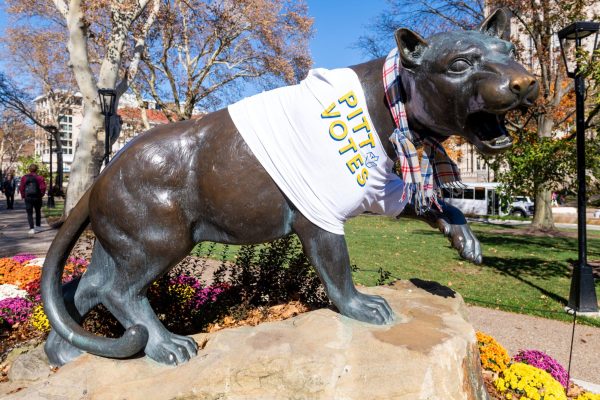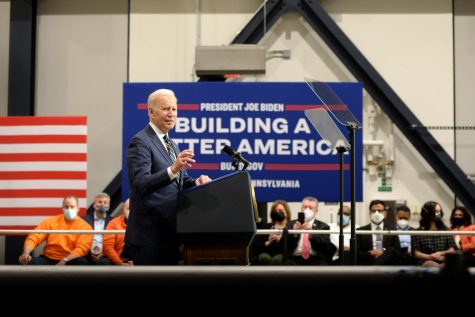Terence Smith Pitt’s newest endowed chair
February 12, 2003
The medal awarded to Terence Smith was heavier than the one he got in Sydney.
“It has a kind… The medal awarded to Terence Smith was heavier than the one he got in Sydney.
“It has a kind of Pittsburgh ‘oomph’ to it,” he said Tuesday night.
The medal, and the speech that followed, were in honor of Smith’s appointment as Pitt’s newest holder of an endowed chair.
As the new Andrew W. Mellon professor of contemporary art history, Smith said he hopes in the coming years to earn the position he had just been awarded.
“I take seriously the idea that a professor should profess,” he said, defining “professing” as a combination of passing one’s subject to others, pursuing one’s profession and declaring publicly one’s faith – in his case, in art.
His hour-long speech in the Frick Fine Arts auditorium focused on the contributions of contemporary art to international discourse. Contemporary art, Smith said, is a reflection of a global world where there has been no dominant artistic style since the 1970s.
Using terms he’s coined such as “contemporneity” and “iconomy,” Smith illustrated the place of art and architecture in the global economy and Pittsburgh’s place in the art world, using the Cathedral of Learning – which he said is still an effective marketing tool – as a familiar example. He also used the image of the World Trade Center as being an example of how art can mean different things to different people.
“If images cannot be contained, destroy them,” he said, citing a lesson history has taught. “Obliterate the traces and leave only the remains of power.”
He added that the tactic backfired on the terrorists, however, because the image of the falling towers came to be just as symbolic. The terrorists unwittingly sucked their own culture, which abhors images, into the Western media, where pictures of Osama bin Laden constantly grace television sets.
Smith also addressed the designs for the new World Trade Center, saying that, while architects were still too shocked by the attacks of Sept. 11, 2001, to be truly revolutionary, the plans were symbolic of a new mission of contemporary architecture.
“Different ways of thinking about community, of thinking about living together, can be conceived,” he said.







